12 Types of Succulents for Outdoors (With Pictures)
Succulents have an established reputation for being indoor plants, charming as they are on bookshelves, and perfect as they are on window ledges. However, they can go beyond your desk or windowsill. If you’re planning for a succulent garden this year, check out these 12 types of succulents for outdoors. You’d be surprised how stylish they can make your garden look!
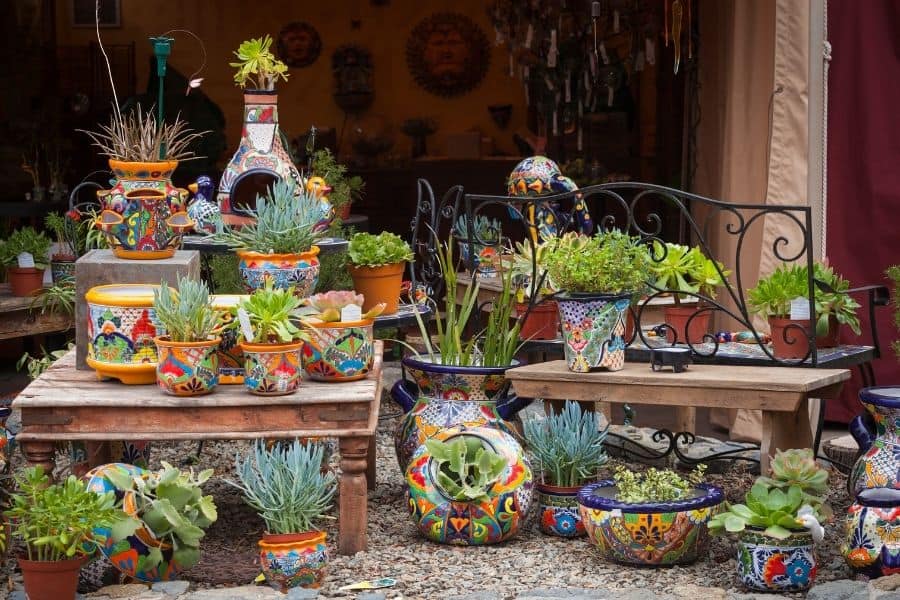
Contents
Types of Succulents for Outdoors
There are three major considerations for growing succulents outdoors: Temperatures both winter and summer, amount and timing of natural rainfall, and duration and intensity of sunlight.
With that in mind, below are the types of succulents that will do well outdoors.
Related Post:
1,000 Types of Succulents With Names and Pictures
Echeveria
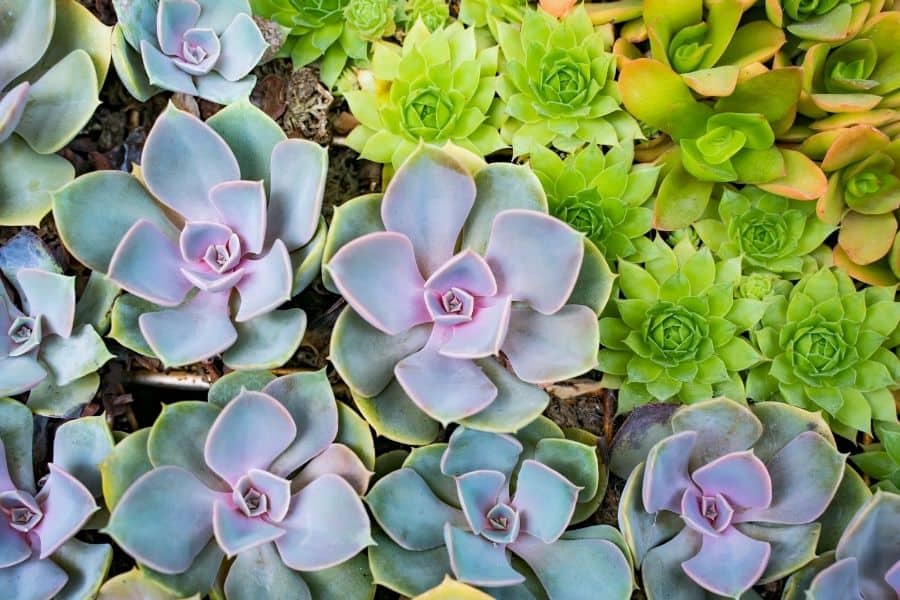
Echeveria is easy to care for outdoors and grows well in either containers or toasty garden beds. The many varieties and colors of Echeveria plants provide wonderful tones and texture for mixed beds and pots.
Native to Mexico and central and southern America, the Echeverias prefer desert conditions but will tolerate periods of moisture as long as they are allowed to dry out before applying more water. These plants thrive on neglect and cope well in drought, usually in USDA hardiness zones 9 to 12.
Echeverias thrive in well-drained soil. Although described as soft, they are pretty hardy. They can tolerate cold but can’t cope with wet and cold, so plants should be moved to a frost-free place during winter.
Echeverias should receive at least four to five hours of bright, direct light every day. If Echeverias do not receive enough light they will become elongated and leggy, often ‘reaching’ towards the closest source of light. Hence, if you prefer outdoor living space concepts, this particular succulent will be the perfect addition to your backyard.
Sempervivum (Hens and Chicks)
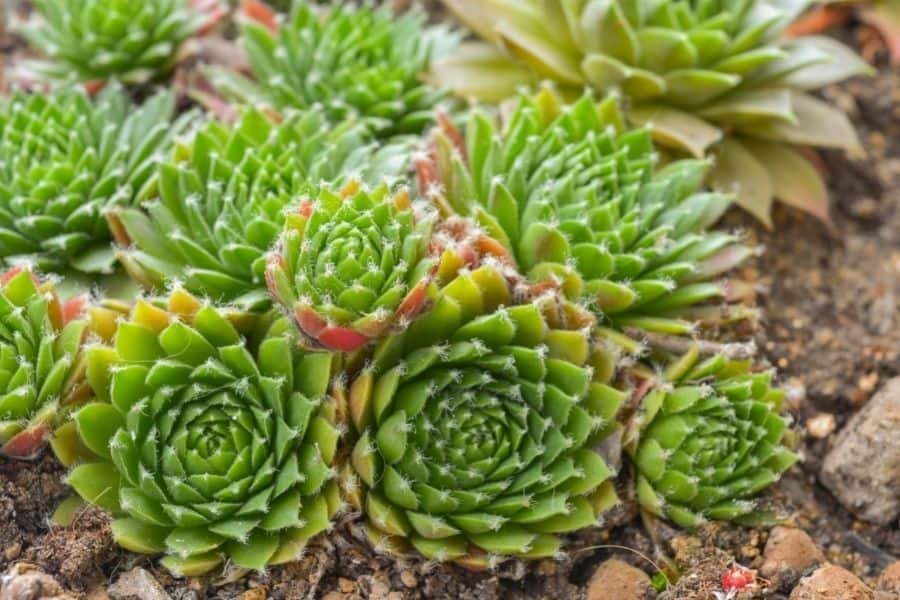
Sempervivum is famous for its ability to withstand cold, windy, and drought conditions, making it a popular choice of outdoor succulent. It falls into the USDA hardiness zones 4 to 9.
For growing Sempervivum in the ground, you need sandy or gravelly soil. Clay soils can be amended with coarse sand, pumice, or lava rock to create the essential drainage. You can also mulch with lava rock or other mineral mulch to drain moisture away from the crown.
If grown in pots, there is less need to worry about drainage as moisture would not retain as long as in the ground, provided the pots have drainage holes. The majority of Sempervivum are frost hardy but if you prefer to grow a variety that is not, plant it in a pot and move indoors for winter.
Sedum (Stonecrop)

Sedum is a hardy, easy-to-care-for succulent which makes it suitable for use in an outdoor garden. There are many different varieties and species of sedum, but can be divided into two main categories based on their growing habits – creeping sedum and upright sedum.
Creeping sedum spreads on the ground, growing only a few inches or less. This makes them ideal as ground cover along paths, in rock gardens, or even in between other succulents in planters.
Upright sedum tends to grow into tall clumps that produce a tight mass of tiny flowers. Their height and attractive flowers stand out as a choice for border gardens.
Creeping and vigorous species will tolerate partial shade, but most sedums do best in full sun. One thing to note if growing sedum in an area that gets long, cold winters (Zone 5 and colder), is to plant in full sun to improve overwintering.
As with most succulents, Sedum requires well-draining soil as it is susceptible to rot due to too much moisture. Sedum falls into the USDA hardiness zones 9 to 11.
Crassula (Pigmyweed)
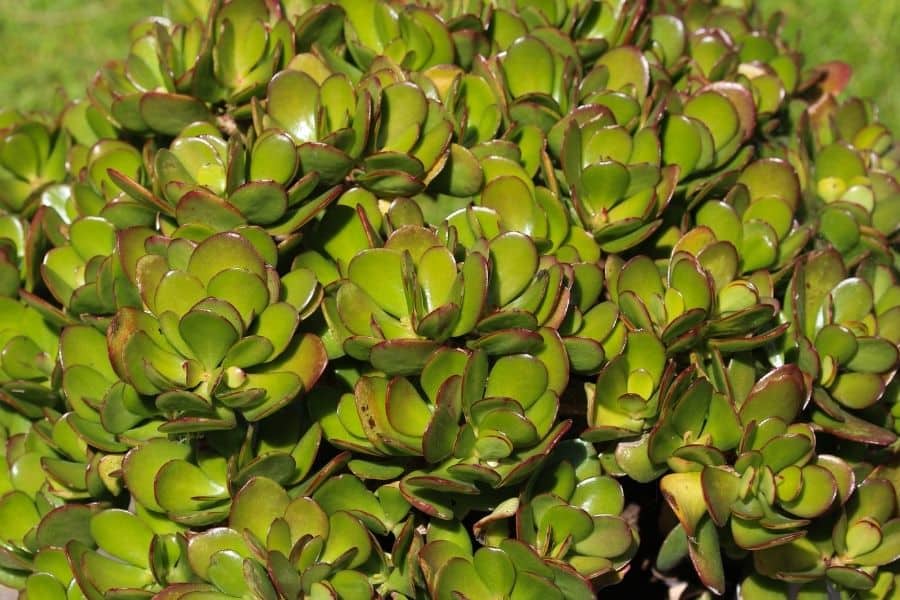
Crassula is one of the easiest succulents to grow in the garden or outdoor pots. One species, the Crassula ovata, referred to as the Jade Plant, Jade Tree, and Money Tree, is a very common plant, available at most garden outlet centers and local nurseries. It falls into the USDA hardiness zones 9 to 12.
Crassula thrives in average to poor, rocky or sandy, dry, well-drained soils in full sun or partial shade. Its best leaf coloration is obtained in full sun.
Additionally, Crassula requires little irrigation and readily survives on modest rainfall alone. Excessive moisture will cause root and stem rot, particularly if the soil is not fast draining. This succulent is drought-tolerant.
Thus, given the plant’s minimal water requirement, it’s suitable for individuals who usually forget to water their plants. Note, though, that it doesn’t mean you’ll completely ignore the succulent since it still requires water to live. Moreover, know that you can readily propagate Crassula from cuttings. Adding its leaf to a potting mix will surely take root given enough time.
Take note also that while these plants are delightful to the eyes, remember that these succulents are harmful to your dogs and cats. Any part of the plant ingested by your pet may result in death or severe illness.
Crassula is perfect for rock gardens, coastal gardens, or containers. It is virtually disease-free; however, do watch for mealybugs, vine weevils, and aphids.
Crassula falls into the USDA hardiness zones 9 to 12.
Agave
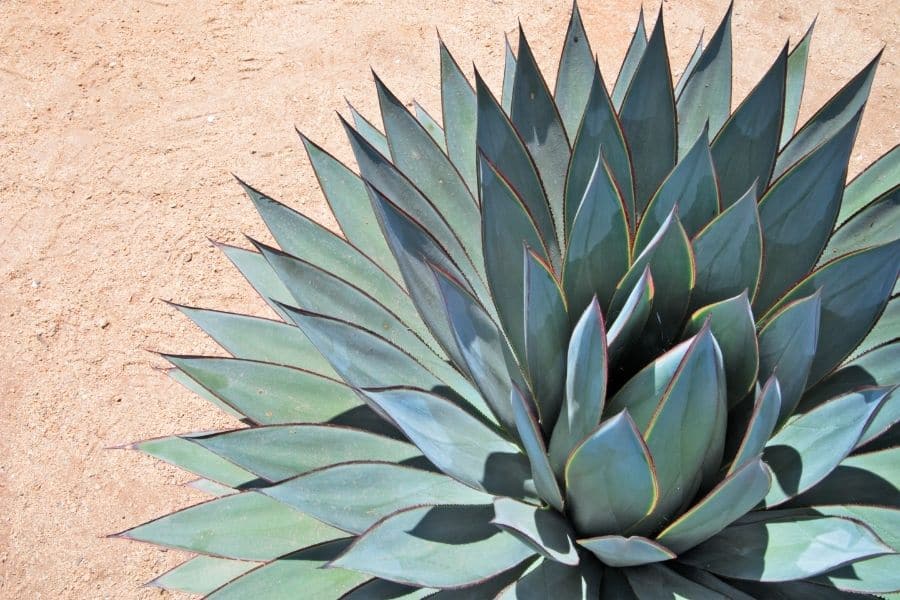
If you’re looking for large succulent plants for the outdoors, look no further from the Agave. It is a wonderful garden plant and makes an excellent potted plant as well. It can be grown outdoors year-round in those areas where little or no frost is encountered.
Agave plants need a spot in full sun to partial shade. The hotter the climate is, the more shade they can handle. Most agave plants are not frost-hardy, but there are some, like Agave parryi, that are reliably perennial to USDA Hardiness Zone 5. However, the majority of them are only hardy in USDA Zones 8 or 9 and above.
Agave will tolerate any well-draining soil, but their preference is rocky or sandy soil. They are not particular about soil pH.
In warm climates, agaves are popular around pools and patios. Their leaves don’t brown and drop frequently, and they stay attractive all year. A spineless variety, like the Foxtail Agave (Agave attenuata), is a safe bet around heavily used areas.
Agaves have very few problems. The agave snout weevil will burrow into the plant’s center to lay its eggs, causing the plant to collapse. Unfortunately, you probably won’t notice this until it’s too late. Remove the plant and check for any remaining grubs.
Haworthia
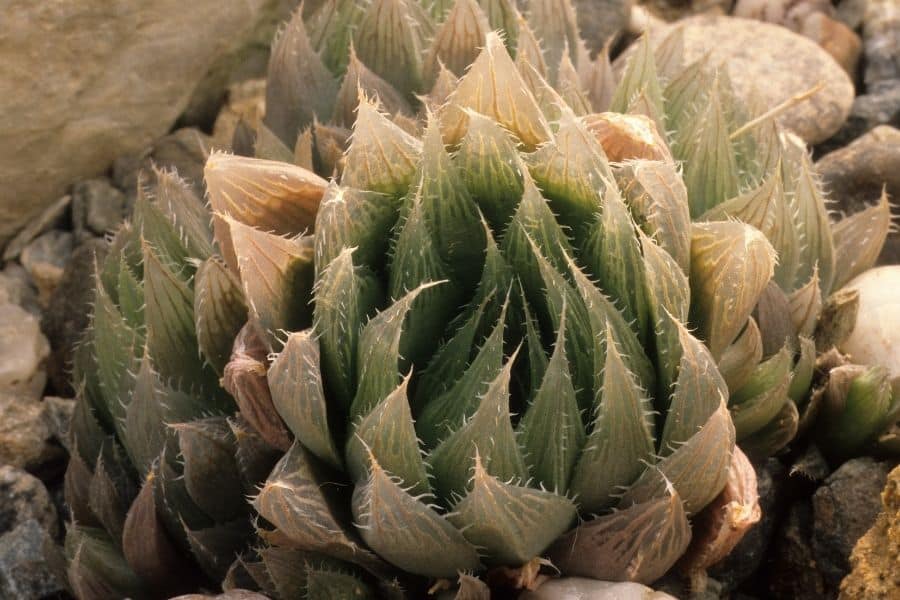
Haworthias live in more sheltered spots than many other outdoor succulent plants, however, in order to produce their colorful foliage, they need some sun. Keep a careful eye on them to make sure they don’t get sunburned. Some species can’t tolerate full sun and may need to live in partial shade. In habitat, they tend to grow under bushes and rock overhangs.
Haworthia thrives in average to poor, rocky or sandy, dry, well-drained soils. Haworthia are small (usually remaining between 3 inches and 5 inches in height) and relatively slow-growing. Outdoors, they are often grown in small clusters in wide, shallow containers rather than in the ground.
Haworthia falls into the USDA hardiness zone 11. Keep in mind that these succulents aren’t hard to grow. Like other plants, a risky scenario for them is excessive water because they shouldn’t have too much or they’ll rot. Due to their size, you can place these small plants in cute containers like teacups. However, you’ll need to ensure the receptacle has sufficient drainage.
Suppose it doesn’t have one. It’s best to first remove the plant from the pot and then put some gravel beneath the container to lessen the soil’s wicking process on top.
Aeonium
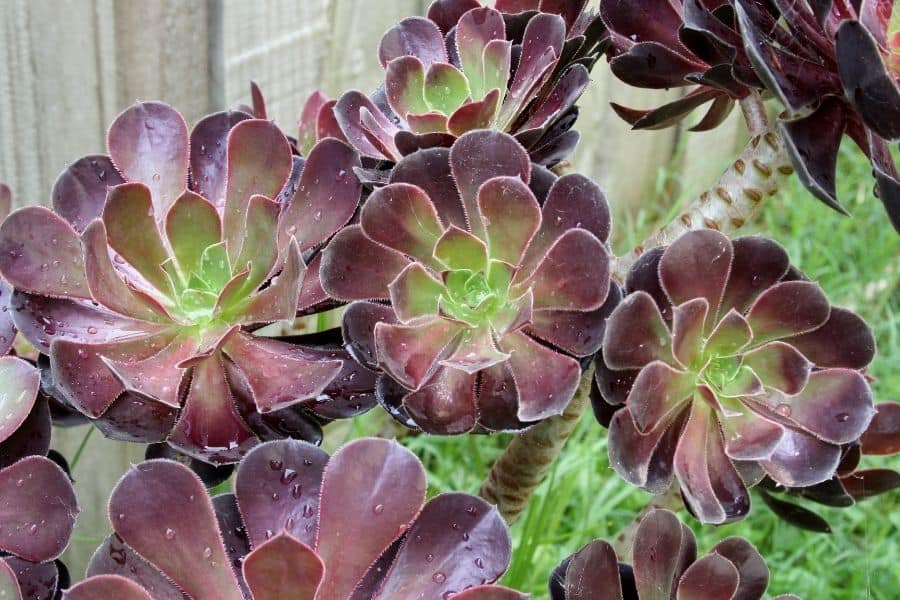
Aeonium prefers well-drained soil in a sunny location, with temperatures between 40°F and 100°F (4°C to 38°C). In hot summers and desert conditions, light shade may be necessary. Aeonium falls into the USDA hardiness zones 9 to 11.
Aeoniums do not like hot or dry weather. They may go dormant in summer and do not require any water, except in excessively dry conditions. Their leaves will curl in extreme heat to prevent excessive water loss.
When caring for Aeonium outdoors, bear in mind that they have shallow root systems and cannot be allowed to dry out completely. Only the top few inches of soil should be allowed to dry out when growing Aeoniums. A sandy loam or regular potting mix is better than a mix specifically for succulents and cacti since Aeonium needs some moisture.
Aeonium in containers requires more frequent watering than those in the ground. Fertilize Aeonium in containers once a year in spring when new growth commences. In-ground plants rarely need fertilizer, but may benefit from a thin layer of mulch just around the base of the plant.
Few pests bother Aeoniums. Slugs can do some damage, and the occasional bird may take a bite.
Senecio
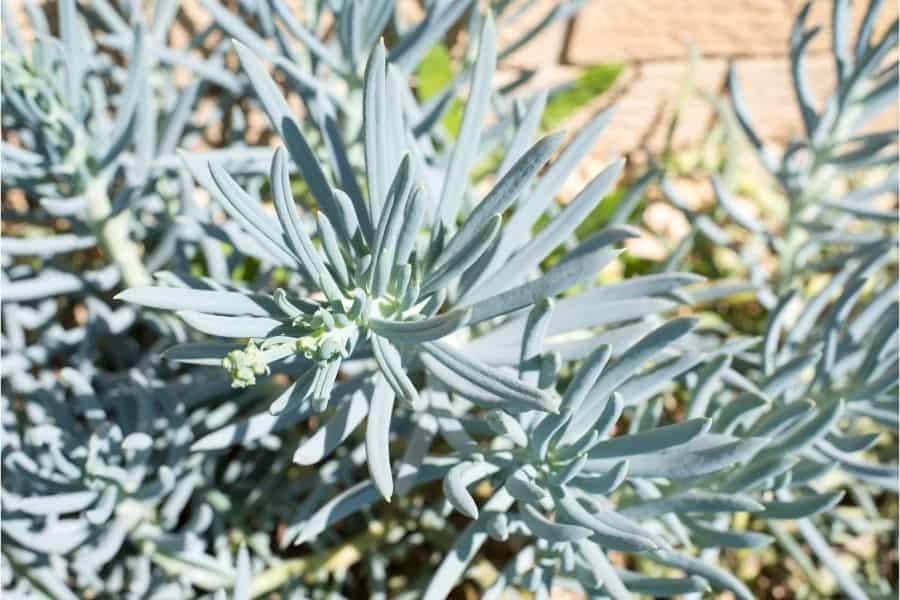
There are about 100 succulent Senecios. There are some large shrub varieties, but many are small, trailing plants or spreading ground covers.
Senecio plants grow best in full sun. Like most succulents, senecio needs sandy, well-drained soil and is prone to rot in soggy conditions.
Senecio is heat tolerant. A few Senecio species can withstand brief periods of cold or dampness, but prolonged exposure will turn them to mush. Senecio falls into the USDA hardiness zones 9 to 11.
In warmer climates, you can use Senecios as ground cover and rock garden plants. They grow well in containers, either mixed or alone. In colder climates, growing them in pots will allow you to bring them indoors as houseplants during the winter months.
Since Senecio plants grow in sandy soil, the nutrients will need to be replenished. Fertilize annually, but lightly. Too much fertilizer can cause an abundance of leggy growth.
Few pests bother Senecio plants, but they can occasionally be affected by scale and mealybugs. If this happens, try treating it with neem oil or an antibacterial soap solution.
Note: Many Senecio species are toxic, so plant them where they cannot be accessed by animals or small children. Wear gloves when working with senecio plants, as the sap can cause severe skin irritation.
Dudleya
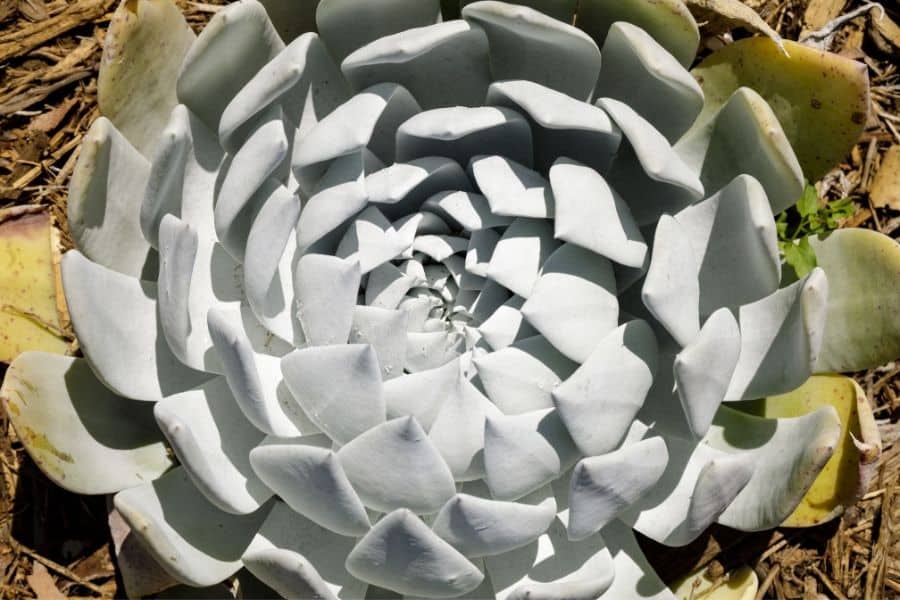
One of the common names for Dudleya is “Liveforever”, which speaks tonnes about this succulent genus that thrives on neglect. Some species reputedly live as long as fifty to a hundred years.
Dudleyas come in two distinct types: branching and unbranching. Both types are ideal for succulent and rock gardens. Branching species develop multiple rosettes that form low, tufted colonies, while unbranched species produce a solitary rosette. The colony formers are valuable groundcovers in the front of a border, whereas the single rosettes make excellent container specimens and focal points in beds.
These soft succulents appreciate a bright light or sunny spot when growing near the coast and afternoon shade when grown inland. Dudleya plant info says they like a cool location but cannot tolerate frost. Too little light quickly results in soft leaves and stretching.
Dudleya falls into the USDA hardiness zones 9 to 12. It is most likely to survive with temperatures above the low 40°F (4°C), and as with other succulents, Dudleya succulent care should include planting in a fast-draining, gritty planting medium.
Dudleyas have their share of disease and pest problems, including mealybugs, aphids, snails, slugs, and fungal disease organisms such as powdery mildew and Alternaria. Avoid overwatering and provide ample air circulation to prevent most diseases.
Dudleyas are particularly susceptible to rot above ground if moisture accumulates in the rosette; plant them on a slight angle to drain water away more quickly.
Graptopetalum
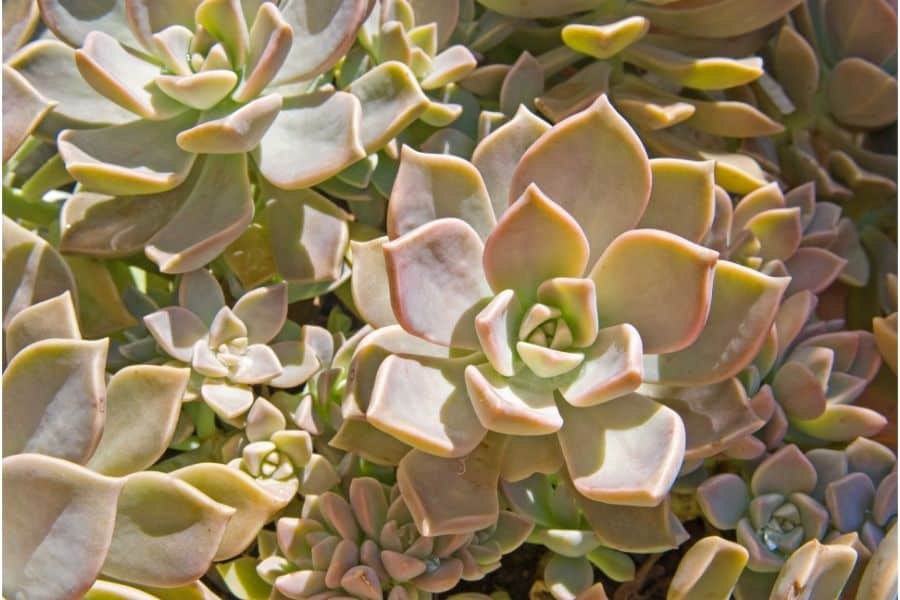
Graptopetalums will look their most attractive in full sun or bright dappled shade. Plants that don’t receive enough light will be leggy and may experience leaf drop.
Graptopetalums thrive in hot weather, but excess humidity is a problem in areas with poorly draining soil. If your garden has clay soil, use raised beds at least six inches tall and a planting mix with half grit, gravel, or sand, and half organic material like peat, coco coir, or commercial potting soil.
Like most succulents, Graptopetalum is very drought-tolerant. They fall into the USDA hardiness zones 7 to 11. The hardy Graptopetalum can be grown throughout the state, handling temperatures as low as 5 °F (−15 °C). For those living in areas with extreme winter conditions, the best way to grow these plants is in containers.
Kalanchoe
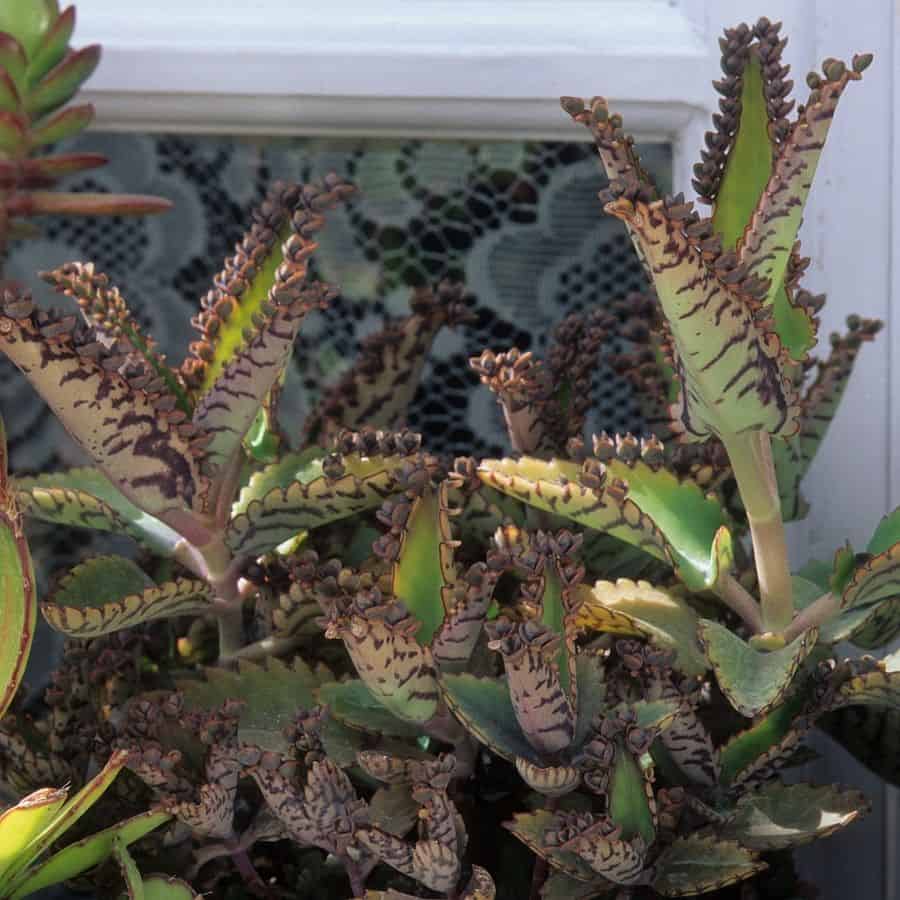
Kalanchoes are native to tropical and subtropical climates, so they require an outdoor temperature of around 45°F (7°C) or higher to survive. Kalanchoe plants grow and bloom best in temperatures between 65°F and 85°F (18°C to 29°C). They fall into the USDA hardiness zones 9 to 12. The plants are sensitive to cold and need frost protection. Too much direct sun can damage the leaves, so plant them in part shade to reduce the risk of damage.
Kalanchoe plants are the best succulents for outdoors as they don’t need much care. They have low water needs, so do not water plants unless the top inch or so of the soil feels dry. Kalanchoes have sensitive roots and do not like soggy soils, which can cause root rot and kill the plants. The plants can withstand some drought, but if the soil gets too dry, it can inhibit plant growth.
Kalanchoes grown outside are more susceptible to pests. Aphids, spider mites, scale insects, and nematodes can all attack the plant. Some signs of insect infestation include honeydew on leaves, bitten or torn leaves, and faded leaves. To treat plants for insects, use a nontoxic treatment like neem oil to avoid damaging the plant. When grown in humid conditions, the plant can suffer from leaf spotting.
To encourage blooming in Kalanchoes, they need short daylight hours and temperatures between 50°F to 60°F (10°C to 15.5°C). Kalanchoes planted where they receive nighttime lighting may not produce blooms as often as those planted where they have a long stretch of darkness at night.
Euphorbia
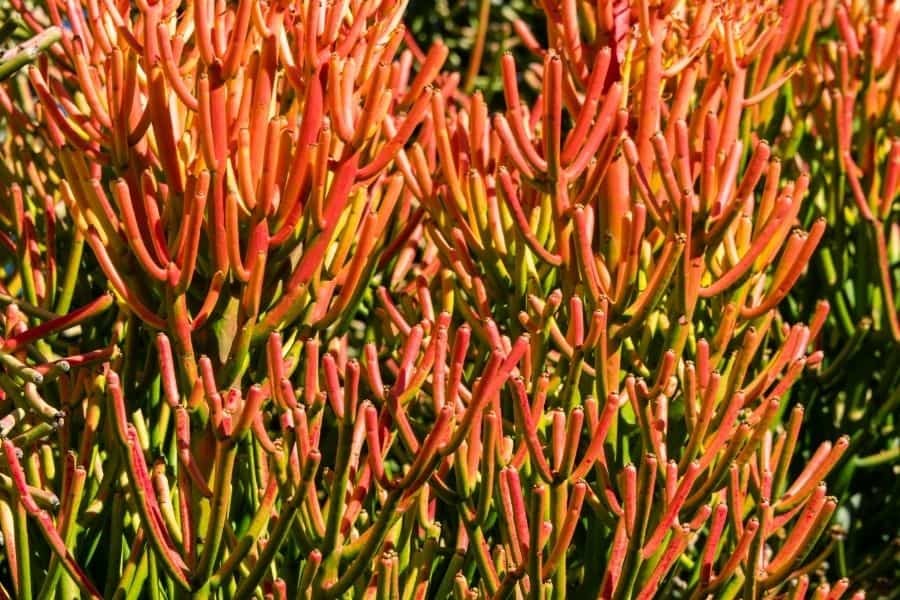
Euphorbia is a very large genus of plants with more than 2,000 species, and about 1,200 of them are succulents. As a general rule, Euphorbia plants prefer a spot in full sun, although they can tolerate partial shade. They are not fussy about soil conditions, even thriving in very poor soils.
Unlike most succulents, Euphorbia does not handle long periods of drought well. They need weekly watering during the summer. Water deeply whenever the soil is dry several inches below the surface, but don’t let the plants sit in wet soil.
Most of the succulent Euphorbias are not frost-tolerant. There are a few evergreen species, like creeping wood spurge (Euphorbia antisphilitica), cushion spurge (Euphorbia polychroma), and donkey-tail spurge (Euphorbia myrsinites: not to be confused with the donkey’s tail succulent) that will survive down to USDA Plant Hardiness Zone 5, but most Euphorbia species fall into zones 6 through 9, with a few hardy only in zones 10 and 11.
Euphorbia plants tend to grow mostly problem-free. Between the milky sap and the spiky needles, few animals find Euphorbias tempting. However, there are a few pests and diseases to be on the alert for like mealybugs, spider mites, and mildews.
Are Succulents Good For Outdoors?
Succulents can be grown outside in almost all climates. If you live in colder parts of the country, it just takes slightly more planning and rotating. Since most types of succulents for outdoors won’t survive a frost, you’ll want to plant your outdoor succulents in pots or containers that can be moved indoors (eg. into a garden room) when temperatures fall.
However, some succulents like hens and chicks are extra cold-hardy and can survive some of the coldest winters by going dormant. These cold-hardy succulents can be planted in the ground outdoors throughout the year.
Another benefit of planting outdoor succulents in pots is being able to move them into the shade when there is too much rain or sun. Succulents are unable to tolerate wet soil for long periods, and will often die from root rot as a result. On the flip side, when summer gets scorching hot, it is advisable to move succulents into the shade as even succulents can get sunburned.
If you live in a perennially warm climate, however, you may want to consider planting your succulents in your garden bed. As desert natives, succulents tolerate weather extremes better than most plants and require way less watering. When planting succulents in the ground, never forget to provide them with well-draining soil to prevent root rot.
Caring for Succulents Outdoors
- Succulents require more frequent watering during summer. If you live in an area with little rainfall, consider watering ground succulents once a week, and succulents in pots every other day.
- Consider reducing irrigation during fall and winter so that succulents can tolerate colder temperatures. Damp soil makes succulents more vulnerable to frost damage.
- When planting sprawling succulent plants outdoors, remember to allow sufficient space between plants as these plants spread generously when they mature.
- Outdoor succulents are more susceptible to infestation, such as mealybugs. These white, cottony insects are common in warmer climates and greenhouses. If you observe mealybugs on your outdoor succulents, consider removing the infested leaf or branch. If they have invaded the whole plant, it’s best to get rid of the plant.
- If planting in pots, it is vital to choose the right soil and pots for outdoor succulents. Use pots with drainage holes at all times. Terra cotta pots are ideal, as they naturally wick away moisture from the soil.
